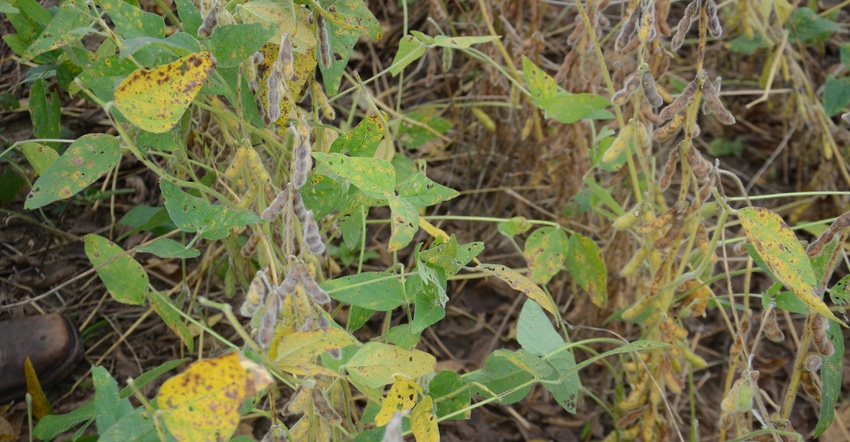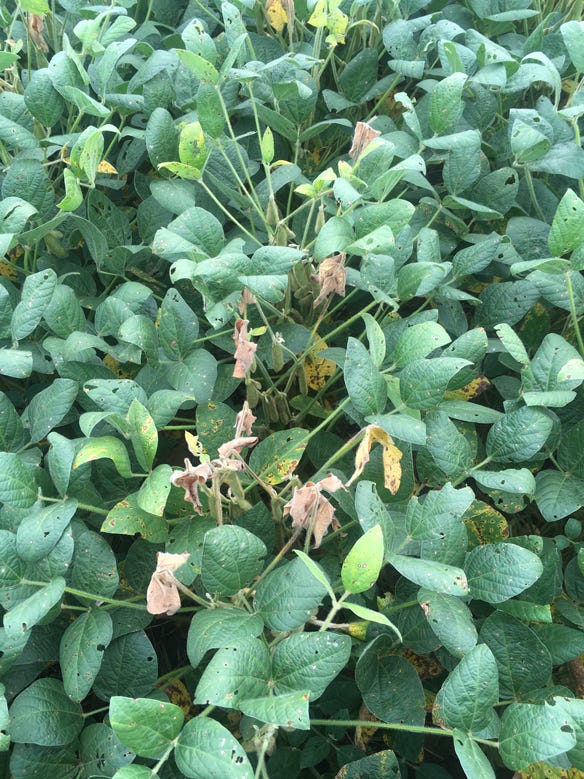
You’ve heard a lot about sudden death syndrome in soybeans this year, and you will likely hear more because it was prevalent in many areas in 2021. You’ve also heard about phytophthora root rot because it’s a constant threat, especially in wetter fields. It can even show up later in the season and pick off individual plants.
What you’ve likely heard less about are diseases that don’t occur as frequently, but they can be devastating in any one field when they do occur. White mold fits that category.
Recognizing white mold
Justin Petrosino, an agronomist with Stewart Seeds, Greensburg, Ind., says although he saw plenty of SDS in 2021, he also ran across more instances of white mold than he likes to see.
“What you typically see first are isolated dead, single plants among healthy plants when soybeans are still green and haven’t started to turn color yet near the end of the season,” he noted in text alerts sent to customers this year. The agronomist says white mold is often found in lower parts of a field, where soybeans are larger, green and healthy.

When you examine the dead plant or plants you find scattered in the mix, you can usually see a fuzzy, white mold along the lower part of the plant. When you look closely, you will find small, black bodies resembling rat droppings along the stem. These are technically called sclerotia. You may also find discoloration and even blockage if you split open stems. The more intense the infection, the greater number of dead plants you’re likely to find.
Battling white mold
So, what do you do if your agronomist scouted your fields and told you there was white mold, or if you are sure you saw it yourself this past year? First check with your seed dealer, Petrosino says. He or she will know which products in their lineup of soybean varieties have good protection against white mold, and which ones, if any, might be more susceptible.
Several companies use a rating system for diseases such as white mold. Because there is not one standardized rating system for disease, make sure you understand what various numbers mean in the system your seed company uses.
“White mold tends to be field-specific as well,” Petrosino says. “Be sure to rotate to corn if you saw white mold in a field this year.
“The next year the field is back in soybeans, keep an eye on the weather. If rainy or humid conditions look like they will persist through flowering, consider applying a fungicide.”
Petrosino says Delaro Complete or Propulse fungicides at the R1 reproductive stage followed by Delaro 3 at R3 can offer strong protection against white mold. The infection typically begins when flowering occurs during wet, humid weather. He says both fungicides have two modes of action against white mold.
About the Author(s)
You May Also Like




